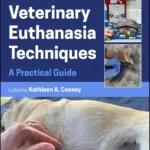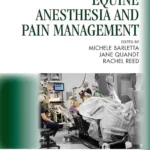Brucellosis
Brucellosis
Brucellosis, one of the most prevalent but neglected zoonoses worldwide, is caused by infection with Gram-negative bacteria of the genus Brucella. The most common species causing brucellosis in humans are Brucella melitensis (main reservoirs: goats and sheep), Brucella abortus (main reservoirs: cattle/other Bovidae) and Brucella suis (main reservoir: pigs). Human exposure mainly occurs through direct contact with infected animals, consumption of contaminated food (especially unpasteurised milk and milk products) or inhalation of contagious aerosols.
Synonyms
In humans: Mediterranean fever, undulant fever, Malta fever, melitococcosis, rock fever of Gibraltar, and gastric fever.
In animals: Contagious abortion, infectious abortion, epizootic abortion, Bang disease (in cattle), slinking of calves and ram epididymitis.
Historical Context
●● 1884: Dr David Bruce differentiated between brucellosis (Malta fever) and typhoid outbreaks in Malta. Later, in 1887, Dr Bruce isolated B. melitensis (Micrococcus melitensis at that time) from the spleen of a British soldier who died from a febrile illness (Malta fever).
●● 1897: Danish veterinarian L.F. Benhard Bang discovered Bang’s bacillus or bacillus of cattle abortion, later named B. abortus, which was considered as the principal causative agent of brucellosis in cattle and undulant fever in humans.
●● 1905: Themistocles Zammit demonstrated the zoonotic nature of brucellosis by isolating B. melitensis from goat’s milk. The discovery that healthy goats could be carriers of the disease has been considered as one of the greatest advances in the study of epidemiology.
●● 1941: The first live attenuated ‘strain 19 vaccine’ was licensed for brucellosis.
Characteristics of the Organism
Brucellosis is considered as one of the most prevalent zoonoses affecting farm animals and humans, with considerable socio-economic and trade losses. The genus Brucella is composed of Gram-negative, aerobic, facultative intracellular, non-motile, non-spore-forming, partially acid-fast microorganisms. These organisms lack flagellae, capsules, endospores or native plasmids.
There are currently 12 species of Brucella, four of which (melitensis, abortus, suis and canis) have zoonotic potential of public health significance [1]. As per the Centers for Disease Control and Prevention (CDC) classification, the Brucella species causing brucellosis are categorised as ‘group B’ pathogens due to their low infective dose (i.e. 10 bacteria) and potential of the aerosol route of transmission. A list of Brucella species and their natural hosts is provided in Table 2.1 [1].
Survivability Factors
Brucella spp. are quite sensitive to commonly used disinfectants and easily killed by the milk pasteurisation process. The organism cannot survive acidity below pH 4. However, Brucella can survive in various environmental conditions for long periods when there is an adequate combination of humidity and temperature.
Some of the common vehicles of the pathogen and associated survivability periods are listed below [2].
●● Dust: 15–40 days
●● Tap water: up to 60 days
●● Wet soil: up to 70 days
●● Goat’s cheese: up to 180 days
●● Liquid manure: up to 2 years
Pathogenesis
Brucella spp. have a type IV secretion system named VirB and periplasmic cyclic β-1,2- glucans. This enables Brucella to redirect their intracellular trafficking to avoid fusion and intracellular killing in lysosomes, and thus reach their final replicating niche in the endoplasmic reticulum. After entry into the endoplasmic reticulum, Brucella extensively replicates without restricting basic cellular functions or generating programmed cell death. It has been suggested that the smooth, non-endotoxic lipopolysaccharides help in blocking the development of innate and specific immunity during the early stage of infection, and protect the pathogen from the microbicidal activities of the immune system [3].
In cattle, sheep, goats and swine, susceptibility to brucellosis is high in sexually mature animals. Young animals are often resistant but latent infections can occur and such animals when matured may present a hazard as a carrier. The protection in brucellosis is usually short-term and incomplete, and lifelong immunity does not occur, so reinfections can be possible.
Note: Erythritol sugar is considered important for determining tissue tropism of B. abortus. It is a well-known fact that bovine placental tissue is rich with erythritol, and during gestation, B. abortus replicates intensively in placental trophoblasts, which may induce disruption of placental integrity and abortion.
Brucella spp. infect humans as an incidental host, where the pathogen can multiply within phagocytic cells. In humans, Brucella may gain entry via ingestion or inhalation, or through conjunctiva or skin abrasions. The intracellular lifestyle of Brucella limits exposure to the host innate and adaptive immune responses and sequesters the organism from the effects of some antibiotics.
The unique features of pathology in infected hosts are typically divided into three distinct phases: (i) the incubation phase before clinical symptoms, (ii) the acute phase during which the pathogen invades and disseminates in host tissue, and (iii) the chronic phase that can eventually result in severe organ damage and death of the host.
Brucellosis in humans typically presents with high-grade undulating fever. However, chronic brucellosis may affect many organs, leading to arthritis, orchitis, hepatitis, encephalomyelitis and endocarditis. The low number of virulent organisms required for infection (infectious dose of 10–100 organisms) combined with the capacity for aerosolisation renders Brucella spp. as a category B pathogen and potential agent for bioterrorism [4].
Transmission of Brucellosis in Animals
The pathogen is generally associated with but not obligated to specific hosts. For example, in cattle, B. suis and B. melitensis infections can occur if cattle are in contact with infected pigs and goats.
The disease is highly contagious and the infected animals act as the main source of the disease in the herd. Brucella can also pass through abraded/injured skin and all mucous membranes. Factors such as wide host range and resistance of Brucella spp. to environmental factors and the host immune system facilitate its survival in the population for prolonged periods.
The natural infection in animals occurs mainly through the following mechanisms.
●● Ingestion of food or water contaminated by uterine discharges, aborted foetus or foetal membranes, and even through licking the genitalia of infected animals.
●● Skin or mucous membrane contamination and udder inoculation from infected milking cups.
●● Infected males can spread the infection among females through natural mating (common in sheep and pigs, rarely in cattle) and artificial insemination (if the semen is not screened for the pathogen).
●● Intensive mixed livestock farms in endemic regions may facilitate cross-species infection.
Notes:
●● Aborted foetus, placental membranes or fluids and other vaginal discharge after abortion (or calving) of infected animals are highly contaminated (1013 micro-organisms have been estimated in 1 g of placenta) [5].
●● It is important to bear in mind that dogs can acquire infection with B. abortus, B. melitensis or B. suis from aborted ruminants or swine, usually by ingesting foetal or placental material and they can then excrete these pathogens which may pose a serious hazard to humans and livestock. Hence, proper biosecurity of farms must be a priority in Brucella control programmes.
Transmission in Humans
Brucellosis is considered an important occupational zoonosis. Farmers, veterinarians, abattoir workers, meat industry workers and personnel involved in laboratory brucellosis research are at-risk groups. An overview of transmission of brucellosis in animals and humans is shown in Figure 2.1. The important transmission routes for brucellosis in humans are as follows.
●● Contact with an infected animal(s) or their secretions. The risk activities involve close contact with infected animals such as handling aborted animals, clinical examination of the uterus, shearing, vaccination and treatment of infected animals.
●● Transmission via inhalation of aerosols generated through contaminated secretions during abortions of infected animals.
●● Accidental inoculation with live vaccine strains, especially among veterinarians during vaccination.
●● Other risky practices in some regions of the world include skinning of stillborn lambs, kids and aborted foetuses, or crushing the umbilical cord of newborn lambs and kids with the teeth.
●● Laboratory-acquired infections (LAIs) of brucellosis by aerosol transmission are widely accepted as a potential biohazard. This mainly occurs due to low awareness or availability of biohazard precaution measures which include improper handling of the pathogen without biosafety level- 3 cabinets (BSL-3).
●● The alimentary route of transmission of brucellosis includes consumption of unpasteurised dairy products or improperly cooked contaminated meat and meat products.
●● Rare transmission of brucellosis between humans may occur through the breach in placental barrier, lactation, sexual intercourse or blood and bone marrow transfusion.
Clinical Signs of Brucellosis in Animals
Characteristic but not specific signs of brucellosis in most animal hosts include late-term abortion (third trimester) or premature birth, infertility, retention of placenta, stillbirth or weak offspring.
Infected cows usually abort once, but some animals may abort during subsequent pregnancies. Other important clinical signs include the following.
●● In many cases, Brucella localises in the supramammary lymph nodes and mammary glands of infected animals and results in secretion of the pathogen in milk throughout their lives. The disease has been associated with decrease in average milk yield of infected animals.
●● In males, the infection can cause swelling of the testicles (orchitis), epididymitis and arthritis. Hygroma of knee joints is a common clinical outcome.
●● In horses, Brucella causes bursitis (also known as fistulous withers and poll evil [swelling of neck or back due to inflammation of the supraspinous bursa]).
●● In pigs, late-term abortion, prolonged bacteraemia, lameness, paralysis, spondylitis and metritis are the prominent signs.
●● In dogs, abortion occurs in the last trimester of pregnancy with prolonged vaginal discharge. Male dogs suffer from epididymitis, periorchitis and prostatitis.
●● Wildlife animals may also exhibit abortion, infertility, debilitation and even death. Predators such as crows, vultures and bears may act as vectors in disease transmission.
Disease in Humans
Brucella spp. are stealth microbes which exhibit induction of chronic infections in humans. The clinical spectrum of the disease ranges from asymptomatic to severe, life-threatening forms. The incubation period usually lasts 1–4 weeks, but depending on the virulence of the organism, route of entry, infective dose and host resistance, the incubation period may be as long as several months.
The pathogenic and invasive species of Brucella for humans in descending order are: B. melitensis > B. suis > B. abortus > B. canis.
Clinical Symptoms
●● Fever, headache, night sweats, extreme fatigue, malaise, chills, weight loss, joint pain, back pain and orchitis. Besides the general manifestations of illness, brucellosis can involve any organ or tissue of the body (e.g. osteoarticular brucellosis, genitourinary localisation, neurological complications, etc.). In chronic illness, splenomegaly and hepatomegaly are possible.
●● The most characteristic among these symptoms is the triad comprising:
–– fever (may be continuous, intermittent, remittent or irregular)
–– sweating (intensive sweating with the characteristic smell of wet hay, mainly at night, and diaphoresis may be present)
–– arthralgia (arthralgias are of differing intensity and may have migratory patterns).
●● Although cardiac involvement is rare (0–2% of symptomatic patients), endocarditis remains the most common cause of death from brucellosis.
●● Brucellosis during pregnancy is associated with poor foetal prognosis and may result in abortion, miscarriage, prematurity and foetal death.
Diagnosis of Brucellosis
Isolation of the Pathogen
The isolation of Brucella from blood, bone marrow, lymph nodes or cerebrospinal fluids is considered the gold standard test for the diagnosis of brucellosis. However, isolation by cultural technique remains a challenging task as detection requires prolonged incubation due to the organism’s slow doubling time and requires specialised laboratory facilities. Brucella is a class III pathogen, so proper handling in BSL-3 cabinets is advisable.
Brucella can grow on many of the available standard media (e.g. blood agar, chocolate agar, trypticase soy agar, serum-dextrose agar). Bovine or equine serum may be needed for growth by various strains. The organism grows slowly in culture, so subcultures should be made every 5 days onto the solid medium. Good growth is observed at 37 °C with raised and convex, smooth and circular colonies of 0.5–1 mm in diameter.
Notes:
●● The classic biphasic Castañeda method, which is based on a solid and liquid phase in the same blood culture bottle, avoids the need for repeated subcultures. However, the recovery time of Brucella from blood culture can still take up to 30 days.
●● Incubation under 5–10% CO2 is a distinguishing feature for B. abortus isolates.
Serological Diagnosis
Serological antibody tests measure the ability of serum to agglutinate a standardised amount of killed B. abortus cells and reflect the presence of antibodies against the O-side chain (derived from lipopolysaccharide). During infection, Brucella-specific IgM appears by the end of the first week of the disease followed by IgG antibodies. The serum agglutination test, also referred to as standard tube agglutination test (STAT), is commonly used for the diagnosis of acute brucellosis.
Note: The 2-mercaptoethanol (2-ME) Brucella agglutination test is identical to the STAT test except for the addition of 2-ME that disrupts disulfide bonds. This makes IgM antibodies inactive and permits Brucella agglutination only by IgG (resistant to 2-ME disruption). This inactivation characteristic of 2-ME is useful in predicting recovery from brucellosis and determining the adequacy of antibiotic therapy.
Other useful serological tests include:
●● Rose Bengal plate agglutination test (RBPT)
●● counter immunoelectrophoresis (CIE)
●● Coombs’ test
●● immuno-capture agglutination test
●● latex agglutination
●● enzyme-linked immunosorbent assay (ELISA).
Limitations
●● The currently used serological tests were originally developed and validated for use in cattle. Therefore, when applied to other species, they are inaccurate and unpredictable and need revalidation as per local strains.
●● These serological tests are not useful for the diagnosis of B. canis (a naturally O-side chain deficient strain).
●● Human brucellosis is generally confirmed by the following parameters: agglutination titre >1:160, CF titre >1:4 and/or ELISA titre >1:20.
Molecular Diagnosis
The DNA-based assays targeting genus-and species-specific genes, such as conventional polymerase chain reaction (PCR) and real-time PCR, provide better sensitivity than conventional microbiological tests and higher specificity than the traditional serological methods. Genetic loci containing a variable number of tandem repeats (VNTRs), multilocus sequence typing (MLST) and multilocus
variable number of tandem repeats analysis (MLVA) can be used for molecular typing of Brucella strains.
Vaccination and Treatment
Animals
The details of vaccines commonly used in animals are provided below.
●● Live attenuated vaccines.
●● Killed vaccines: B. abortus 45/20 and B. melitensis H38.
Cattle
●● In cattle, B. abortus strain 19 (S19) vaccine is still in use in many countries for the prevention of brucellosis by induction of antibodies to the O-side chain of LPS. A major problem associated with this vaccine is that vaccinated animals cannot be differentiated from infected animals by current serological tests and the vaccine may also induce abortions in pregnant animals.
●● B. abortus strain RB51 (SRB51) is a rough mutant derived from the standard smooth virulent strain 2308 of B. abortus (deficient in the O-side chain). SRB51 has attenuated virulence and has been widely used as an alternative to the S19 vaccine in cattle. Unlike S19, it does not induce antibodies to the O-side chain which enables differentiation among vaccinated and naturally infected animals [6].
Sheep and Goats
●● B. melitensis strain Rev1 has been used for control of ovine and caprine brucellosis but it is associated with a considerable degree of virulence and may induce abortions when administered during pregnancy.
Note: In animals, treatment of brucellosis is not advisable, so culling of the infected animal is suggested by most veterinary experts.
Humans
●● Vaccines: Live human vaccines B. abortus strain 19-BA and strain104M were used in the former Soviet Union (USSR) and China, respectively, but tend to be reactogenic and of limited efficacy.
●● Treatment: The intracellular localisation of Brucella and its ability to adapt to the environmental conditions encountered in its replicative niche (e.g. macrophage) usually result in treatment failure and high relapse rates. The joint Food and Agriculture Organization (FAO)/World Health Organization (WHO) expert committee on brucellosis recommends treatment of adult acute brucellosis with rifampicin (600–900 mg/day orally) plus doxycycline (200 mg/day orally) for 6 weeks.
Prevention and Control
Animals
Vaccination alone will not eradicate brucellosis, as the immunity produced by vaccines is not absolute and can be circumvented with an increased level of infection. Therefore, vaccination policy is more likely to succeed if it is combined with good animal husbandry management measures. Some important measures are as follows.
●● Proper biosecurity of farms with regular screening of herds. Positive cases must be removed from the herd by following the ‘test and segregate/slaughter’ policy.
●● Careful selection of replacement animals with proper quarantine procedures.
●● The preponderance of natural bull service in rural areas, especially in buffaloes, is an important factor in the maintenance and spread of infection. Hence, proper screening of bulls or use of artificial insemination (AI) technology can be employed to avoid sexual transmission.
●● Surveillance programmes to control the disease in the domestic and wild animal reservoirs should be carried out.
●● Proper disposal of contaminated materials (aborted foetuses and genital discharge) as per the guidelines. Humans The One Health approach including interdisciplinary co-ordination, surveillance and political commitment is important in addressing the problem of brucellosis in endemic regions. Some important measures include the following.
●● Proper storage and consumption of animal foods, especially unpasteurised milk and meat products.
●● Health education of at-risk groups through community participation. Encourage the use of personal protective equipment during hazardous activities (especially for risk groups like veterinarians, laboratory workers, slaughter workers, etc.).
●● Strict use of BSL-3cabinets while handling live cultures.





